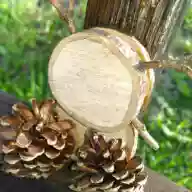[Childcare] Summer songs: Full of fun! Summer nursery rhymes & finger-play songs
When the rainy season ends, summer finally arrives! Here, we’ll introduce a variety of children’s songs to help you enjoy the season.
We’ve gathered songs that kids love, as well as hand-play songs often sung in nurseries and kindergartens.
Listening to these songs will make you look forward to the long-awaited summer even more.
Hand-play songs are also fun for little ones, so be sure to incorporate them into your childcare activities.
While the days will be getting hotter, some children’s songs can make you feel cooler just by listening.
Enjoy a fun-filled summer together with the children!
- Nursery rhymes I want to sing in July: fun summer songs
- Children’s Songs You Can Sing in August: Summer-Friendly Kids’ Songs and Fingerplay Rhymes
- [Sea Nursery Rhymes] Fun children's songs themed around the sea
- [Tanabata Children's Songs] Fun hand-play songs and a nostalgic collection of traditional nursery rhymes and folk songs
- [Children’s Songs for June] Fun finger-play songs and traditional nursery rhymes perfect for the rainy season
- Nursery rhymes and fingerplay songs to enjoy in May! Songs perfect for the fresh green season
- Children’s songs, folk songs, and nursery rhymes about insects
- [Sunflower Songs] A selection of classic and popular tracks that give you energy in the hot summer
- Nursery rhymes, folk songs, and children's songs about food
- Get pumped with popular songs from “Okaasan to Issho”! A collection of timeless tunes everyone will want to sing together
- A collection of cheerful nursery rhymes—songs that make you feel happy when you sing them.
- [Children's Songs] Cute songs recommended for childcare. List of popular nursery rhymes.
- [Childcare] Fun Songs for 2-Year-Olds to Sing! Recommended Song Collection
[Childcare] Summer Songs. Full of Fun! Summer Nursery Rhymes & Hand-Clapping Songs (11–20)
Tanabata-samaLyrics by Hanayo Gondo & Ryūha Hayashi / Music by Kan’ichi Shimofusa

One of the summer events, the Tanabata scene is sung in the song “Tanabata-sama.” The lyrics depict the sight of strips of paper with wishes written on them hanging from bamboo leaves, watched together with the beautiful stars shining in the night sky.
Many children make Tanabata decorations at kindergarten, daycare, or at home.
How about singing this song while decorating, or after you’ve finished, as you look up at the stars? The lyrics include some words you don’t often hear, so if you listen while wondering what those words mean, you’ll enjoy both the song and Tanabata even more.
Tanabata bustleLyrics/Composition: Boku to Kimi.

How about having fun singing and dancing to an original Tanabata Festival song? Singing the classic Tanabata tunes is great, but it’s nice to add one more to your repertoire.
This one also comes with a dance to match the song, so learn the choreography and sing along.
The lyrics are unique and a bit comical.
The moves that match the lyrics are amusing too, so kids will have a blast learning and singing it.
There’s even a part where you call out the names of Orihime and Hikoboshi like lines in a play, so try saying them out loud.
Sing with lots of energy!
The fish jumps.Lyrics and music by Hirotaka Nakagawa

What would happen if a fish that flops and splashes when taken out of the water jumped really high with lots of energy? This song captures that amusing situation.
What would it become if a fish jumped up over your head? What about its eyes and mouth? Your child’s imagination might come up with unexpected answers.
You can also have fun by adapting the lyrics using the answers your child comes up with.
A tadpole is a frog’s child.

Many people probably share the childhood experience of being amazed to learn that tadpoles grow into frogs.
The song “Otamajakushi wa Kaeru no Ko” (“Tadpoles Are Baby Frogs”) teaches that truth in a fun way, and with its easy-to-follow melody it’s a recommended summer song where kids can sing along while learning about living creatures.
As an aside, doesn’t the melody sound familiar from several different songs? In fact, the original tune is the American folk song known as “The Battle Hymn of the Republic.” After it was introduced to Japan, a variety of parody versions were created, including this “Otamajakushi wa Kaeru no Ko” and even the Yodobashi Camera commercial jingle.
bug-catching game

Even if you feel like you could never touch bugs now, many people probably enjoyed catching them as a matter of course when they were kids.
This song, “Mushitori Asobi,” is a recommended summer tune that lets children—and adults, too—enjoy bug-catching within the song and recapture a childlike spirit.
It was used on the popular TV program “Okaasan to Issho,” but since it’s an older song, you might try looking for the CD at a rental shop.
Only three bugs appear—dragonflies, butterflies, and a praying mantis—so it’s easy to remember, and as long as you can mimic gestures like searching for bugs and react when you spot and catch them, you can have fun dancing to it!
Seagull Sailornursery rhyme

Seagull Sailor is a song that likens an all-white seagull to a sailor dressed in a white hat and white clothes.
It’s a Japanese children’s song released in 1937 and was later included in postwar elementary school music textbooks.
Lyricist Toshiko Takeuchi is said to have written it after visiting Yokohama Port and seeing seagulls flying beautifully against the setting sun.
The vocalist was Junko, the daughter of composer Mitsuyo Kawamura, and the song went on to be sung overseas after it was presented in 11 languages at international music exchange events.
The sea evokes summertime, making this a perfect song for feeling the season.
[Childcare] Summer Songs. Full of Fun! Summer Nursery Rhymes & Hand-Play Songs (21–30)
Ice Cream SongLyrics by Yoshimi Sato / Music by Koichi Hattori

“Ice Cream Song” is a Japanese children’s song with lyrics by Yoshimi Sato and music by Koichi Hattori.
Originally written in 1960 for the radio program ABC Kodomo no Uta (ABC Children’s Songs), it was broadcast on NHK’s Minna no Uta in 1962 and became well known.
True to its title, it has also been used as a commercial jingle for ice cream.






